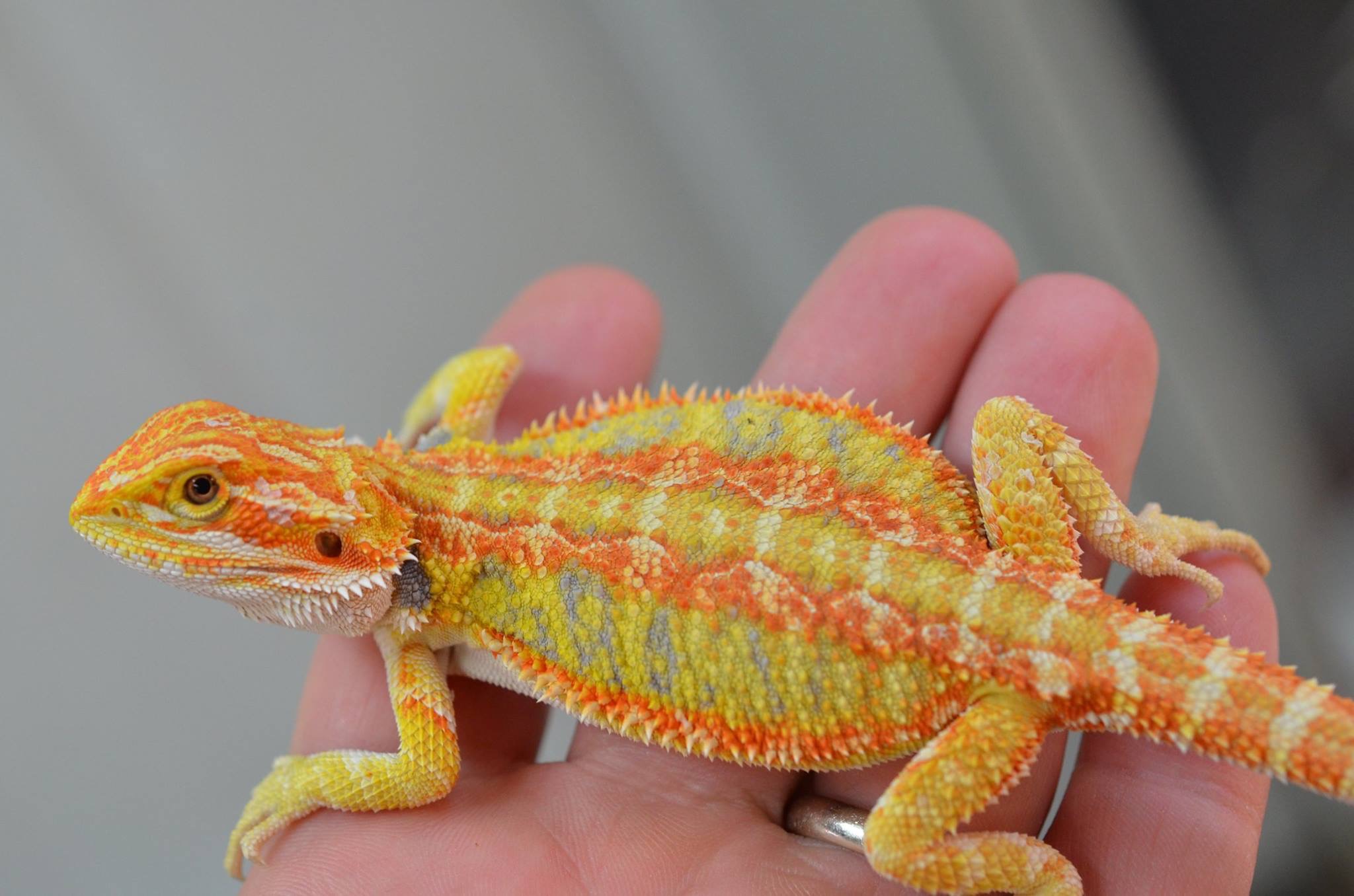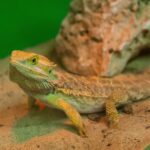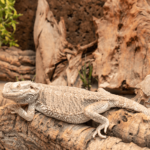We at BeardieBuddy.com are Bearded dragon Breeders producing high quality bearded dragons and we guarantee their health upon delivery with our bearded dragon shipping. Feel free to browse our available bearded dragons and or call us with any questions you may have.
If you are interested in more information on breeding bearded dragons, below is some information I found helpful when I first started.
Guide to Breeding Bearded Dragons
Bearded dragons are one of the most popular lizard pets in America, and uniquely colored “designer dragons” are in demand. Some display pastel orange, violet, and red colorations. Because of this, many people are interested in breeding bearded dragons, but breeding reptiles can be a difficult venture. Temperature, conditions and timing must be correct for a pairing to result in fertile eggs.
A male and female dragon are of course necessary for the process, but determining the sex of a bearded dragon can be tricky. In adult animals, the area at the base of the tail will tell you what sex your reptile is. Males have an indentation in the center of the tail, caused by the bulge of the hemipenes. Females lack these organs and will thus have a slight protrusion in the center of their tails. It is difficult to sex individuals less than three months old.
Fortunately, bearded dragons are among the most prolific of the agamids. With a large enough enclosure, a suitable place for egg laying, and a pair of healthy dragons, successful breeding is not too difficult. It usually follows a short brumation period where the temperatures and daylight hours are reduced for two to three months. This simulates winter. Many bearded dragons can be convinced to attempt breeding without this brumation period, but in cases where both animals are not allowed to rest before mating, low fertility rates can occur.
Sexually mature male bearded dragons will darken the beard below their jaws, bob their heads, and stamp their front feet in a courtship display when in the presence of a desirable female. They will then chase the female around the breeding enclosure in an attempt to mount her. When carrying eggs, the female’s abdomen will expand considerably. It is important to make sure that a gravid female has an egg laying +site available to her. If a site is not provided, egg binding could occur, which has the danger of leading to the death of the dragon.
An egg laying site can be a two foot square box about eighteen inches deep, dilled with potting soil and sand. This substrate should be kept damp. Females will dig in the box before laying their eggs. The appearance of the female bearded dragon is likely to change overnight. She will suddenly become thin again after laying her eggs.
At this time, the eggs should be removed from the laying box. They can be kept in a chicken incubator or other device which will keep them at a temperature of eighty-two to eighty-eight degrees Fahrenheit. A moist perlite and vermiculite medium is often use for egg incubation. Different temperatures will result in a different mix of sexes in the hatchlings. Males hatch at higher temperatures, females at lower, and a mixture of the two in the middle of the range.
+After sixty to eighty days, the dragon eggs will hatch. Many of them may turn out to have been infertile. After the incubation period is over, the eggs will begin to collapse, and within twenty four hours, the babies will emerge. They should be left in the incubator for another twenty four hours to allow them to absorb their yolk sacs. Within seventy two hours, they should be willing to eat.
Bearded dragon hatchlings ought to be fed twice or three times a day. Crickets are a good food to feed young dragons, but size is essential. The crickets should be no larger than 1/4 inch, or hind limb paralysis may result, which is usually fatal. Twice a week, finely chopped salad mixture of the same composition as adult dragon greens should be offered. When housing the hatchlings together, it is important to keep their feeding schedule regular to prevent them from biting their cage mates or your hand.
Source: Bearded Dragon center
Link: http://www.beardeddragoncenter.com/Bearded-Dragon-Breeding.shtml
BACK TO BEARDED DRAGON CARE SHEET
SEE AVAILABLE BEARDED DRAGONS FOR SALE
CONTACT US VIA PHONE OR EMAIL
SHIPPING AND DELIVERY AND OUR GUARANTEE
Bearded Dragons for sale | Bearded Dragon care | Bearded Dragon diet | Bearded Dragon names | Bearded Dragon facts | Do Bearded Dragons bite | Bearded Dragon breeders | Bearded Dragon care sheet | Lights needed for Bearded Dragons | Heating and Temperatures needed for Bearded Dragons | Substrate needed for Bearded dragon | Do Bearded dragons need water | Bathing Bearded Dragons | Disinfecting Bearded Dragon Enclosure | Hygiene | Bearded Dragon life span | Bearded Dragon pictures | Bearded Dragon behavior | Bearded Dragon temperament | Bearded Dragon housing | Bearded Dragon cages | Bearded Dragon enclosures | Buy a Beardie | Beardies for sale | Bearded Dragon Morphs | Hypo Bearded Dragon | Translucent Bearded Dragon | leatherback Bearded Dragon | Red Bearded Dragon | Pastel | SunBurst Bearded Dragon | Bearded Dragon with tiger strips | Sandfire Bearded Dragon | Citrus Bearded Dragon | Bearded Dragon babies | Reptile Supplies | Custom Cages | Feeders | Reptile shows | Breeding Facility | Silkback Bearded Dragon | German Giant Bearded Dragon | Dunner Bearded Dragon | Bearded Dragon Forum | BeardieBuddy






:max_bytes(150000):strip_icc()/13-f9fc54bc64854d20b43e00db91a9cb16.jpg)